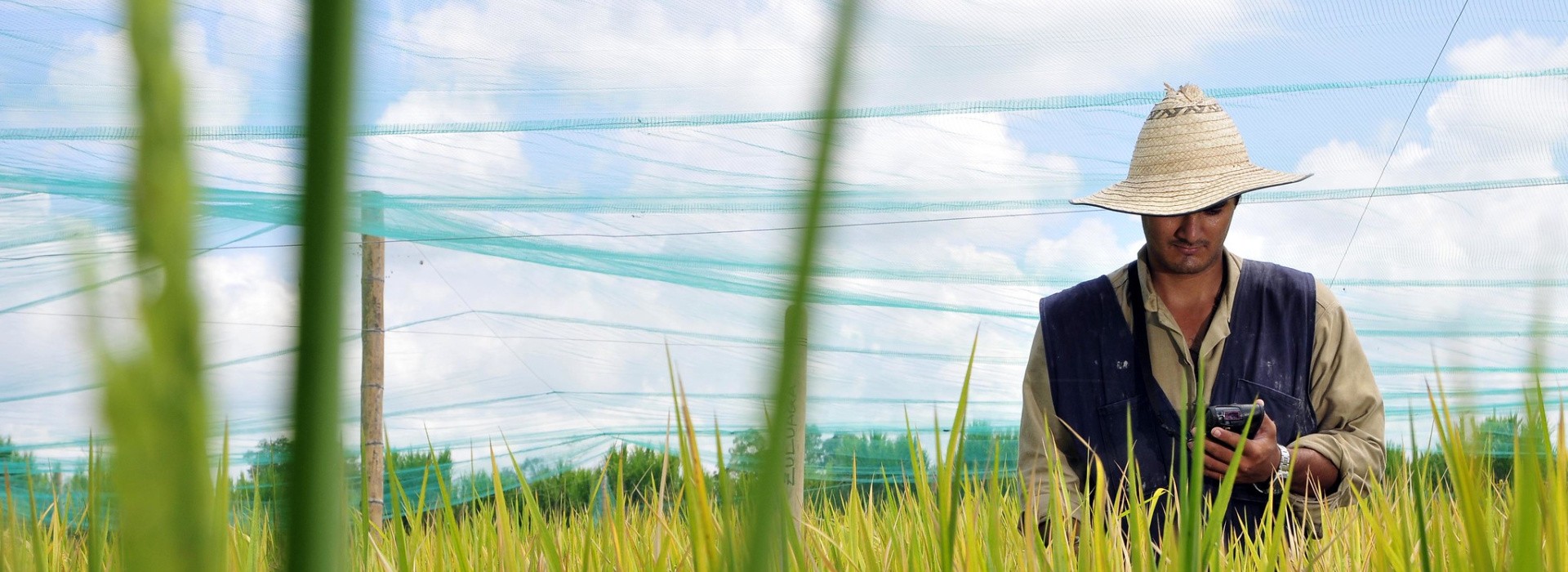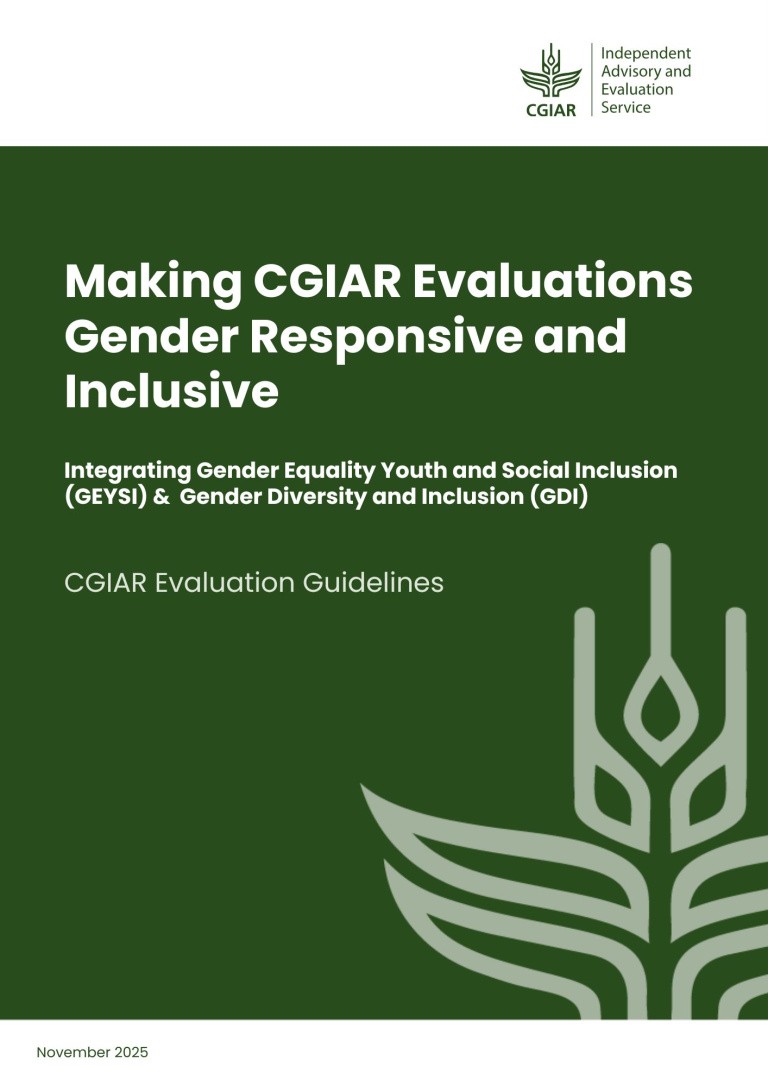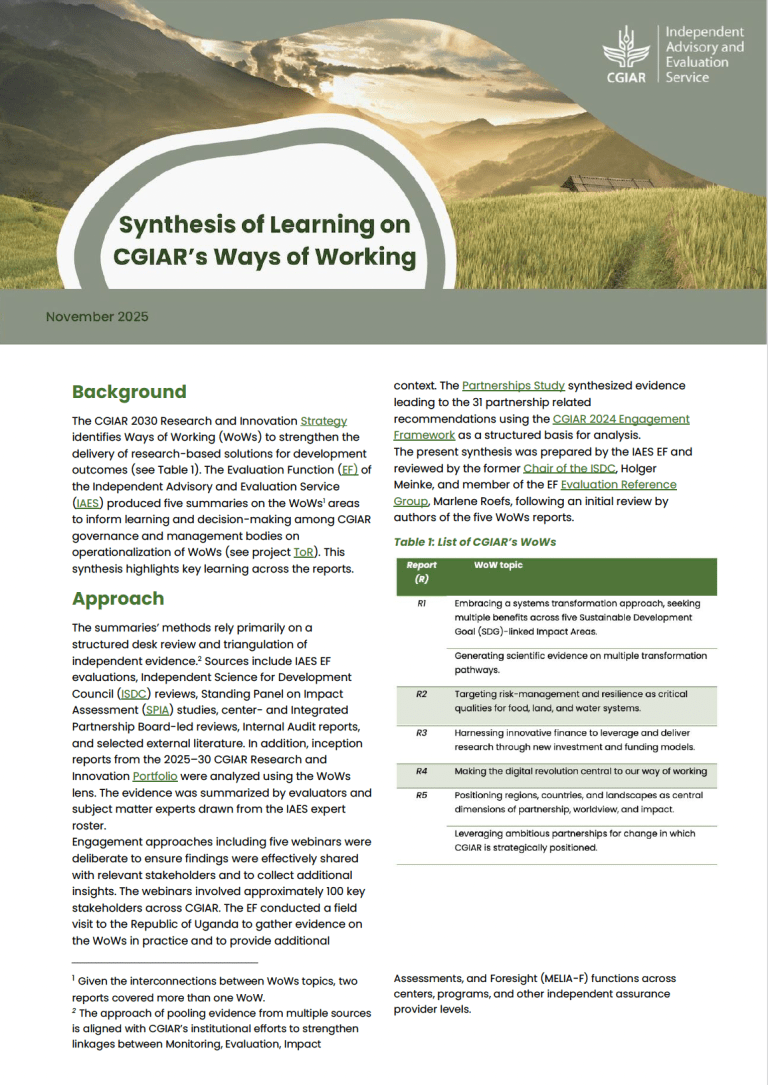At this defining moment in the transition towards One CGIAR, and in response to CGIAR System Council’s request, the CGIAR Advisory Services (CAS) Evaluation Function commissioned a major evaluative exercise—the 2021 Synthesis of Learning from a Decade of CGIAR Research Programs (CRPs)—to inform the next phase of CGIAR-led agricultural research. The CRP 2021 Synthesis pooled evaluative evidence from 43 CGIAR evaluations, reviews, assessments, and syntheses undertaken during the two phases of CRPs—2011–16 and 2017–21. The objective of the Synthesis was to crystalize findings, identify patterns around priority topics, shed light on system-wide issues affecting the CRPs, recognize key evidence gaps and needs for future evaluations, and provide recommendations for the future orientation of CGIAR.
Based on findings from the independently commissioned 2021 Synthesis, as a strategic tool for reflection CAS Secretariat used the classic Strength, Weaknesses, Opportunities, Threats (SWOT) matrix to unpack both CRP internal strengths and weaknesses and its external threats and opportunities (Table 1).
Table 1. SWOT Analysis of CRPs based on the 2021 Synthesis Findings
STRENGTHS | WEAKNESSES |
|
|
OPPORTUNITIES | THREAT(S) |
|
|
CRP Strengths
The 2021 Synthesis affirmed the value-add of CRPs as a vehicle and pathway for achieving CGIAR’s mission, particularly in expanding relevant and innovative multidisciplinary research. CRPs have “opened new research areas for CGIAR, including nutrition and health, market chains, climate change, advanced genomics, and systems-based approaches, aided by new, innovative partnerships with ARIs.”[1] The CRPs also mobilized partners within and external to CGIAR to be agile and responsive to complex challenges, such as fall armyworm outbreaks. In addition, they have boosted the global image of CGIAR and highlighted “the importance of agri-food research through evidence-based policy-level engagement.”[2]
The report identified a range of system-wide determinants that precipitated the gains reaped by the CRPs. One such factor is the trust capital the CRPs and scientists have built and the mechanisms for the achievement of outputs and outcomes generated through solid Agricultural Research for Development (AR4D) partnerships and legacies.[3] Another is the strong reputation CGIAR has for its biophysical research and cutting-edge outputs.[4]
Areas for Improvement
System-wide constraints also weakened the achievement of CRP objectives. Although some CRPs such as Policies, Institutions, and Markets (PIM) had an increased proportion of social scientists in its second phase, the report in general highlights the limited engagement and integration of social science as a missed opportunity to enhance focus on the poor, leapfrog scaling processes and “propel research outputs and outcomes to widespread adoption.”[5] Another constraint was “the inadequacy of CGIAR monitoring, evaluation, learning, and impact assessment (MELIA) systems for planning, monitoring, and incorporating learning from CGIAR R4D activities…Reporting systems, including MARLO, were considered important but deemed to be overly complex, very time consuming and requiring duplication of effort, without providing a complete picture of CRP progress and lesson learned.”[6] The inadequacy of the MELIA system was further compounded by the multiple reporting lines imposed by the diverse demands of Window 1 and Window 2 (W1/W2) funds and bilateral funders. Uncertainty around funding and W1/W2 budget volatility were also key constraints. However, CRPs were able to tailor and adopt strategies to deal with funding variability.
Better expectation management between CRPs and donors, alignment with next- and end-user priorities as well as early engagement and dialogue with a range of partners is critical to achieving success across CGIAR’s five impact areas. Some potential threats in the CRP external environment are the impact of COVID-19, funding uncertainty, and resource capacity deficits in countries and regions that may negatively impact the progressive transfer of responsibilities towards sustainable local ownership of innovations to which CGIAR has contributed. These and other constraints would need to be addressed to achieve the ambitious targets of the 2030 Research and Innovation Strategy.
Lessons Learned
The Synthesis put forward the likelihood of CRP outputs being scaled out to an interplay between three levers. First, that CRPs have a developed understanding of the multifaceted needs of targeted end-users in complex environments. Second, that CRPs have strong links with next-stage users. And, third, that CRPs develop outputs that are readily transferable and locally adaptable.
Recommendations
Moving forward, the 2021 Synthesis calls for One CGIAR to prioritize strategic partnerships and stakeholder engagement by developing and implementing equitable engagement and effective communication strategies. The Synthesis also recommends meaningful engagement with next and end users of CGIAR research through deepening and broadening social science expertise within the system. It recommended strengthened country and regional coordination structures as a facility for One CGIAR to enhance integrated solutions at scale.
Recommendations were also made for the Three Strategic Action Areas and Seven Ways of Working along the new Research Strategy.
Evidence Gaps
The report indicates two types of gaps in the evaluative evidence: methodological and thematic with examples highlighted below.
Methodological Evidence Gap: “Context of Evaluations: Country and regional evaluations were not generally undertaken by IEA/CAS and CRPs themselves. Moreover, there was a methodological gap in that local stakeholders’ voices were largely absent from 2020 reviews.” Pull-out quote 2021 Synthesis Report pg. 27.
Thematic Evidence Gap: “Effectiveness of integrating cross-cutting issues in CRPs programs: Beyond gender dimensions, which were increasingly taken into account, little evidence was found from which to draw conclusions about the extent to which the needs of youth, the landless, indigenous peoples, and other groups of concern have been specifically addressed by CRP activities.” Pull-out quote 2021 Synthesis Report pg. 26.
To read and download the report and annexes, please visit: cas.cgiar.org/evaluation/publications/2021-Synthesis
[1] 2021 Synthesis report pg I
[2] 2021 Synthesis report pg 18.
[3] 2021 Synthesis report pg 1.
[4] 2021 Synthesis report pg 1.
[5] 2021 Synthesis report pg VII
[6] 2021 Synthesis report pg 20



